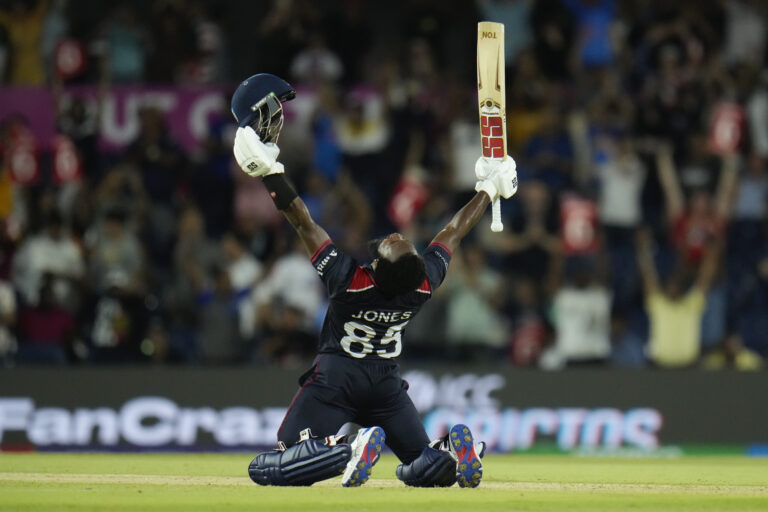The Significance of Lord’s Cricket Ground in Cricket History
99Exch, Gold: Lord’s Cricket Ground, also known as the Home of Cricket, holds a prestigious place in the world of sports. Established in 1814 by Thomas Lord in St John’s Wood, London, the ground has a rich history filled with memorable moments and legendary matches. Originally situated in Dorset Square, Lord’s Cricket Ground has witnessed the evolution of cricket over the centuries, playing a pivotal role in shaping the sport as we know it today.
Throughout its esteemed history, Lord’s Cricket Ground has become synonymous with tradition and excellence. The iconic venue has hosted numerous historic events, including the first-ever Test match in 1884 between England and Australia. Over the years, Lord’s has stood as a symbol of cricketing heritage, attracting fans from around the globe to experience the magic of the game in its purest form.
Architectural Features of Lord’s Cricket Ground
Lord’s Cricket Ground, also known as the “Home of Cricket,” boasts impressive architectural features that contribute to its iconic status in the world of sports venues. The most recognizable feature of Lord’s is the Victorian-era Pavilion, which stands as a symbol of tradition and heritage. Designed by Thomas Verity and built in 1889, the Pavilion is a beautiful blend of red brick, ornate detailing, and elegant arches that exude a timeless charm.
Another striking architectural element at Lord’s is the futuristic Media Centre, designed by Future Systems and completed in 1999. With its avant-garde, aluminum-clad structure resembling a spaceship, the Media Centre provides a stark contrast to the historic Pavilion, symbolizing the blend of tradition and modernity that defines Lord’s Cricket Ground. The Media Centre’s innovative design not only serves a functional purpose but also adds a contemporary touch to the historic venue.
Notable Matches Played at Lord’s Cricket Ground
One of the most memorable matches at Lord’s Cricket Ground took place in 2000 when England faced the West Indies. This match is etched in history as the first-ever day-night Test match held at Lord’s. The innovative concept of playing under floodlights added a new dimension to the game, captivating audiences worldwide. The match ended in a thrilling draw, showcasing the competitive spirit and skill of both teams.
Another iconic match at Lord’s Cricket Ground was the 1983 World Cup final between India and the West Indies. This historic event marked a turning point in Indian cricket as they secured their first-ever World Cup victory under the leadership of Kapil Dev. The match was a true display of determination and perseverance, as India overcame the mighty West Indies to claim the coveted title. Lord’s Cricket Ground witnessed jubilant celebrations as India’s triumph resonated with fans across the globe.
Lord’s Cricket Ground as the Home of Cricket
Nestled in the heart of London, Lord’s Cricket Ground stands as the iconic home of cricket. This historic venue, fondly referred to as the “Mecca of Cricket,” holds a special place in the hearts of cricket enthusiasts worldwide. Lord’s is not just a ground; it is a revered institution that embodies the essence and spirit of the gentleman’s game.
With its lush green outfield, distinctive Pavilion, and the renowned Honours Boards that immortalize the feats of cricketing legends, Lord’s exudes a sense of tradition and prestige. The hallowed ground has witnessed countless memorable moments that have shaped the narrative of cricket history. From thrilling matches to heroic performances, Lord’s Cricket Ground stands as a symbol of excellence and sportsmanship in the world of cricket.
Influence of Lord’s Cricket Ground on Modern Cricket
Lord’s Cricket Ground holds a significant influence on modern cricket. It has set a high standard for cricketing venues worldwide, with its rich history and iconic status as the “Home of Cricket.” The traditions and legacy associated with Lord’s have shaped the way cricket is played and viewed globally.
The innovations pioneered at Lord’s, such as the introduction of neutral umpires, the implementation of technology for decision-making, and the concept of day-night matches, have all had a profound impact on the modern game. Furthermore, the spirit of fair play and sportsmanship that is ingrained in the culture of Lord’s has helped shape the ethos of cricket as a gentleman’s game, influencing players, officials, and fans alike.
The Ashes at Lord’s Cricket Ground
The Ashes is one of the most anticipated and fiercely contested series in the world of cricket. When it comes to Lord’s Cricket Ground, the battles between England and Australia in The Ashes have been nothing short of legendary. The ground has witnessed historic moments, intense rivalries, and exceptional displays of skill from both teams.
The atmosphere at Lord’s during an Ashes Test match is truly electric, with passionate fans filling the stands to support their respective teams. The tradition and prestige associated with The Ashes series add an extra layer of excitement and tension to matches played at this iconic venue.
Famous Players Associated with Lord’s Cricket Ground
Lord’s Cricket Ground holds a special place in the hearts of many cricket legends. The hallowed grounds have witnessed the remarkable performances of some of the finest players to grace the sport. From the elegant strokes of Sir Donald Bradman to the fiery pace of Wasim Akram, Lord’s has been witness to an array of cricketing brilliance.
The legacy of players associated with Lord’s Cricket Ground extends to the modern era, with the likes of Virat Kohli and Joe Root etching their names in the annals of cricketing history with stellar performances at this iconic venue. The aura of Lord’s has a way of bringing out the best in cricketers, inspiring them to push the boundaries of their capabilities and leave an indelible mark on the sport.
Innovations Introduced at Lord’s Cricket Ground
Lord’s Cricket Ground has been a hub of innovation since its inception, with numerous groundbreaking ideas introduced to enhance the game of cricket. One of the most notable innovations at Lord’s was the implementation of the third umpire system for making TV replays during matches. This system revolutionized the way decisions were made on the field, increasing accuracy and fairness in crucial moments of the game.
In addition to the third umpire system, Lord’s Cricket Ground also played a pivotal role in introducing the concept of neutral umpires in international matches. By having umpires from neutral countries officiate games, Lord’s helped eliminate bias and uphold the spirit of fair play in cricket, setting a standard that has been adopted worldwide. These innovations have not only shaped the way cricket is played but have also influenced the development of rules and regulations in the sport.
The Future of Lord’s Cricket Ground
As one of the most iconic cricket grounds in the world, the future of Lord’s Cricket Ground holds great significance for the sport. With a rich history dating back to the early 19th century, Lord’s has seen numerous developments over the years to enhance the player and spectator experience. Looking ahead, there are plans to further modernize the facilities at Lord’s, ensuring that it remains at the forefront of cricketing venues globally.
Improvements in technology and infrastructure are expected to be key components of the future of Lord’s Cricket Ground. From innovative seating arrangements to state-of-the-art broadcasting facilities, the aim is to create a world-class environment for players and fans alike. With a continued focus on maintaining the traditions and heritage that make Lord’s so special, while embracing advancements in the game, the future of this historic ground looks set to be both exciting and promising.
Impact of Lord’s Cricket Ground on the Sport of Cricket
Lord’s Cricket Ground has undeniably left a lasting impact on the sport of cricket. Its rich history and prestigious reputation have elevated the status of cricket, making it more than just a game but a symbol of tradition and excellence. The iconic venue has set the standard for cricketing excellence and sportsmanship, inspiring players and fans alike to strive for greatness on and off the field.
Moreover, Lord’s Cricket Ground has served as a breeding ground for innovation in the sport. From the introduction of new technologies to the implementation of rules and regulations, the ground has been at the forefront of shaping the modern game of cricket. Its influence can be seen in every aspect of cricket, from player conduct to match scheduling, highlighting its pivotal role in the evolution of the sport.
What is the history of Lord’s Cricket Ground?
Lord’s Cricket Ground, located in St John’s Wood, London, is known as the “Home of Cricket” and has a rich history dating back to 1814.
What are some notable matches played at Lord’s Cricket Ground?
Lord’s has hosted several historic matches, including the first-ever Test match in 1884, the World Cup final in 1999, and numerous Ashes battles.
How has Lord’s Cricket Ground influenced modern cricket?
Lord’s has been a pioneer in introducing innovations such as the use of protective equipment, the concept of a “home of cricket,” and the implementation of technology in umpiring decisions.
Who are some famous players associated with Lord’s Cricket Ground?
Players like Sir Don Bradman, Sachin Tendulkar, Sir Ian Botham, and Brian Lara have all left their mark on Lord’s with memorable performances.
What is the future of Lord’s Cricket Ground?
The MCC, which owns Lord’s, is constantly looking to improve and modernize the ground while preserving its historic significance for future generations to enjoy.







